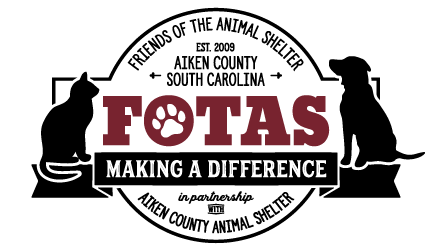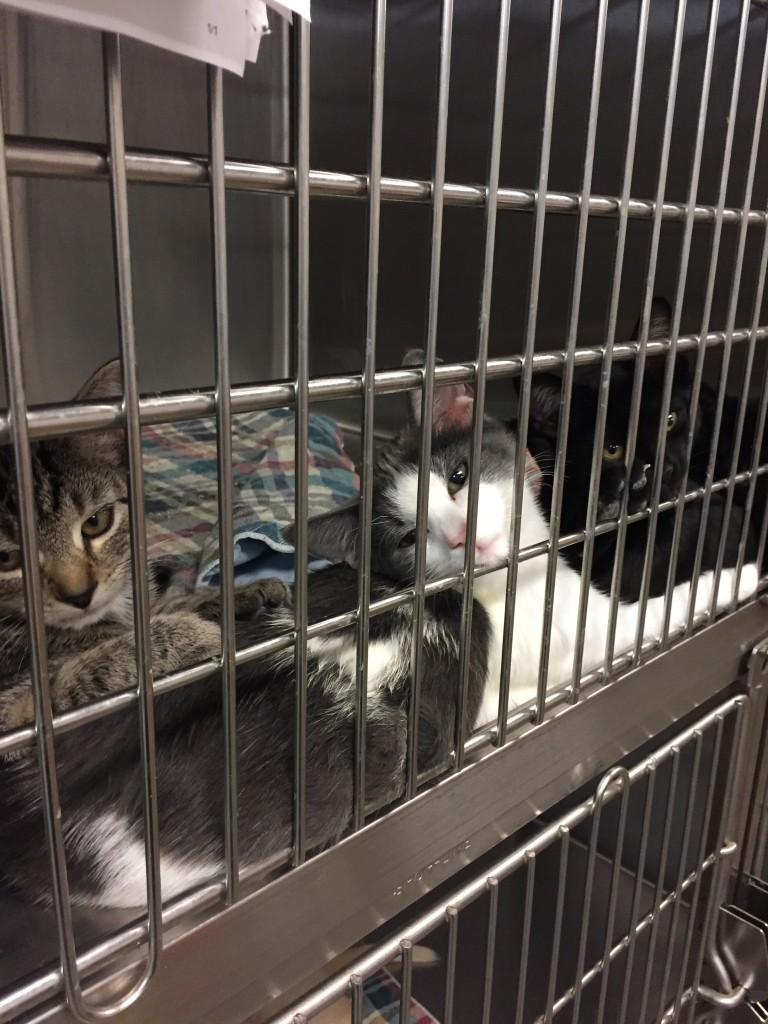By Joanna D. Samson, Vice President of FOTAS
By the time it hit the South Carolina Coast, Hurricane Matthew had been downgraded from a Category 5 to a Category 2 storm; but the 85 mph winds, 10-14 inches of rainfall and extraordinarily high storm surges nevertheless created life-threatening conditions and caused the wide-spread destruction of property. Thousands of people were evacuated from the coast.
But how about all the animals left behind to fend for themselves?
The Charleston Animal Society sprang into action in the week ahead of the storm, evacuating the 70 animals in its facility to make room for the anticipated deluge of animals rescued by the storm (at last count, 500). Fifty-two animals were evacuated from Dorchester County, 70 from Pawley’s Island and 60 from Horry County. Many of the animals were transferred to places as far away as Pennsylvania, Maryland, and Ohio. The York County Humane Society took in 15 cats and three dogs. Here in Aiken, the SPCA Albrecht Center for Animal Welfare took in an additional 24 dogs.
The effort and resources needed to conduct rescue operations and to handle that many additional animals are enormous: hundreds of dedicated volunteers, substantial amounts of food, thousands of extra crates, and medical supplies. Many private vehicles were pressed into service to haul the animals to safety. Already overworked shelter staff work overtime to accommodate the influx of extra animals. It’s an exhausting, time-consuming and stressful time.
Thank God those types of hurricanes only come around once every, say, 20-30 years.
But what if every week at an animal shelter was fraught with the same kind of crises, requiring the same level of resources, creating the same level of anxiety, except the cause was man-made rather than an act of God? That would be a monumental tragedy of epic proportions.
That would also be just a normal week at the Aiken County Animal Shelter during the hurricane season.
For example, take the month of August: 603 animals were taken in at the Shelter, that’s an average of 27 animals every single day. September intake was also high, ranging from a low of seven to a high of 38 (IN ONE DAY!) Twenty-one animals were taken in on September 1st, 28 on September 6th), 26 on September 12th, 27 on September 16th, 20 on September 19th, and 29 on September 22nd.
Every month in the summer, intake skyrockets, volunteers and staff are overworked and critical resources run low. It’s an exhausting, time-consuming and stressful time, but it doesn’t end once the hurricane passes.
And because the County Shelter is a public facility, it cannot turn away any animal just because there is no additional room or because resources are short.
The dedication and generosity of the rescue communities and their citizens during the Hurricane Matthew crisis was nothing short of remarkable, and I am gratified by the public response. Thank God, because there’s nothing more heart-wrenching than witnessing the suffering of animals left homeless through no fault of their own.
We know. We see it week-in and week-out, day-in and day-out, every month during the entire hurricane season. Until every County pet is fixed, your County Shelter needs your help—and not just for the occasional emergency.
Please, please, volunteer, donate, adopt. Their lives are in our hands.


